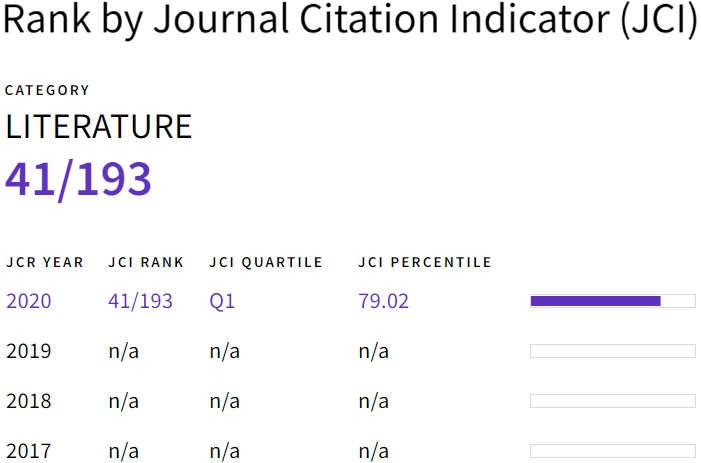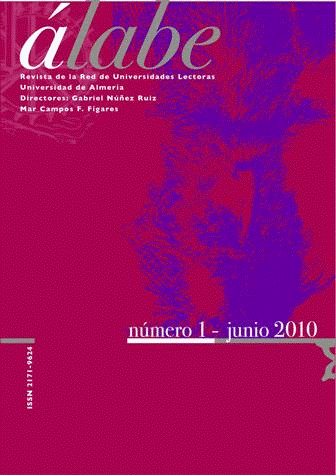Estudio comparativo de la prueba de redacción académica IELTS por escrito frente a la realizada en computadora en participantes de IELTS de inglés como lengua extranjera en la Universidad de Teherán
Resumen
Palabras clave
Texto completo:
PDF (English)Referencias
Asiyaban, A. R., Yamini, M., Bagheri, M. S., & Yarmohammadi, L. (2020). Implicit/explicit
knowledge and its contribution towards tense consistency employment across EFL
learners’ proficiency levels. Cogent Education, 7(1), 1727129.
Alves, R. A., Castro, S. L., de Sousa, L., & Stromqvist, S. (2007). Influence of typing skill on
pause-execution cycles in written composition. In M. Torrance, L. van Waes, & D.
Galbraith (Eds.). Writing and cognition: Research and applications (pp. 55–65).
Amsterdam: Elsevier.
Barkaoui, K. (2016). What and when second-language learners revise when responding to timed
writing tasks on the computer: The roles of task type, second language proficiency,
and keyboarding skills. Mod. Lang. Rev. 100(1), 320–340.
Barkaoui, K., & Knouzi, I. (2018). The effects of writing mode and computer ability on L2 test
-takers' essay characteristics and scores. Assessing Writing, 36, 19-31.
Blackhurst, A. (2005). Listening: Reading and writing on computer-based and paper-based versions of IELTS. Research Notes, 21, 14–17.
Breland, H., Lee, Y., & Muraki, E. (2004). Comparability of TOEFL CBT writing prompts: Response mode analyses (TOEFL research report No. RR-75)Princeton, NJ: ETS
Chambers, L. (2008). Computer-based and paper-based writing assessment: A comparative text
analysis. Research Notes, 34, 9–15.
Chan, S., Bax, S., & Weir, C. (2017). Researching participants taking IELTS Academic Writing
Task 2 (AWT2) in paper mode and in computer mode in terms of score equivalence, cognitive validity and other factors.
Chapelle, C. A., & Douglas, D. (2006). Assessing language through computer technology. Ernst Klett Sprachen.
Clariana, R., & Wallace, P. (2002). Paper-based versus computer-based assessment: key factors associated with the test mode effect. British Journal of Educational Technology, 33(5), 593-602.
Davies, A. (2007). Assessing academic English language proficiency: 40+ years of U.K. language tests. In J. Fox, M. Wesche, D. Bayliss, L. Cheng, C. E. Turner, & C. Doe (Eds.), Language testing reconsidered (pp. 73–86). Ottawa: University of Ottawa Press.
Douglas, D., & Hegelheimer, V. (2007). Assessing language using computer technology. Annual Review of Applied Linguistics, 27, 115–132.
Green, T., & Maycock, L. (2004). Computer-based IELTS and paper-based versions of IELTS. Research Notes, 18, 3–6.
Fulcher, G. (2014). Philosophy and language testing. In A. J. Kunnan (Ed.), The companion to language testing (pp. 1431–1451). Hoboken: Wiley.
Horkay, N., Bennett, R. E., Allen, N., Kaplan, B., & Yan, F. (2006). Does it matter if I take my writing test on computer? An empirical study of mode effects in NAEP. Journal of Technology, Learning and Assessment, 5(2), Retrieved from: www.jtla.org.
IELTS. (2014). Guide for educational institutions, governments, professional bodies and commercial organisations. Retrieved from
https://www.ielts.org/- /media/publications/guide-for-institutions/ielts-guide-for-institutions-uk.ashx?la=en
Jin, Y., & Yan, M. (2017). Computer literacy and the construct validity of a high-stakes computer-based writing assessment. Language Assessment Quarterly, 1–19.
Lee, Y. J. (2002). A comparison of composing processes and written products in timed-essay tests across paper-and-pencil and computer modes. Assessing Writing, 8(2), 135-157.
Li, J. (2006). The mediation of technology in ESL writing and its implications for writing assessment. Assessing Writing, 11(1), 5-21.
Lottridge, S., Nicewander, A., Schulz, M. & Mitzel, H. (2008). Comparability of Paper-based and Computer-based Tests: A Review of the Methodology. Pacific Metrics Corporation 585 Cannery Row, Suite 201 Monterey, California 93940.
Maycock, L. O. U. I. S. E., & Green, T. O. N. Y. (2005). The effects on performance of computer familiarity and attitudes towards CB IELTS. Research Notes, 20, 3-8.
Najmi, K. (2015). The effect of genre-based approach on enhancing writing skill of Iranian law students. Modern Journal of Language Teaching Methods, 5(2), 474.
Neuman, G., & Baydoun, R. (1998). Computerization of paper-and-pencil tests: When are they equivalent?. Applied Psychological Measurement, 22(1), 71-83.
O'Loughlin, K. (2011). The interpretation and use of proficiency test scores in university selection: How valid and ethical are they?. Language Assessment Quarterly, 8(2), 146-160.
Parsi, P., & Vahdani Sanavi, R. (2015). The effects of dynamic assessment on improving the writing ability of intermediate EFL learners. International Journal of Language Learning and Applied Linguistics World, 8 (2), 73-88.
Poggio, J., Glasnapp, D., Yang, X. &Poggio, A. (2005). A Comparative Evaluation of Score Results from Computerised and Paper & Pencil Mathematics Testing in a Large Scale State Assessment Program.The Journal of Technology, Learning and Assessment, 3(6), 5-30.
Puspawati, I. (2012). EFL/ESL (English as a Foreign/Second Language) Students' Perceptions toward the TOEFL (Test of English as a Foreign Language) Test.
Quaid, E. D. (2018). Reviewing the IELTS speaking test in East Asia: Theoretical and practice- based insights. Language Testing in Asia, 8(2), 25-48.
Russell, M., & Haney, W. (1997). Testing writing on computers: An experiment comparing
student performance on tests conducted via computer and via paper-and-pencil.
Education Policy Analysis Archives, 5(3), Retrieved from: http://epaa.asu.edu/epaa/v5n3.html.
Shohamy, E. G. (2001). The power of tests: A critical perspective on the uses of language tests. Pearson Education.
Torrance, M., & Galbraith, D. (2006). The processing demands of writing. In C. A. MacArthur,
S. Graham, & J. Fitzgerald (Eds.). Handbook of writing research (pp. 67–80). New York: Guilford Press.
Uysal, H. H. (2010). A critical review of the IELTS writing test. ELT Journal, 64(3), 314-320.
Van Waes, L., & Schellens, P. J. (2003). Writing profiles: The effect of the writing mode on pausing and revision patterns of experienced writers. Journal of pragmatics, 35(6), 829-853.
Weir, C. Y. R. I. L., & Shaw, S. T. U. A. R. T. (2005).
Establishing the validity of Cambridge ESOL writing tests: towards the implementation of a socio-cognitive model for test validation. University of Cambridge ESOL Examinations Research Notes, 21, 10-14.
Weir, C., Yan, J., O'Sullivan, B., & Bax, S. (2007). Does the computer make a difference?: The reaction of candidates to a computer-based versus a traditional hand-written form of the IELTS Writing component: effects and impact. International English Language Testing
System (IELTS) Research Reports 2007: Volume 7, 1.
Weir, C. J., O’Sullivan, B., & Jin, Y. (2007). Does the computer make a difference? The reaction of test-takers to a computer-based versus a traditional hand-written form of the IELTS writing component: Effects and impact. IELTS Research Report No.7British Council & IDP Australia311–347.
Wolfe, E. W., & Manalo, J. R. (2005). An Investigation of the Impact of Composition Medium on the Quality of TOEFL Writing Scores. TOEFL® Research Report. RR-72. ETS RR-04-29. ETS Research Report Series.
Wolfe, E. W., Bolton, S., Feltovich, B., & Niday, D. M. (1996). The influence of student experience with word processors on the quality of essays written for a direct writing assessment. Assessing Writing, 3, 123–147.
Yurdabakan, I. (2012). Primary School Students' Attitudes Towards Computer Based testing and Assessment in Turkey. Turkish Online Journal of Distance Education- 13 (12), 177-188.
DOI: http://dx.doi.org/10.15645/Alabe2021.24.6


































